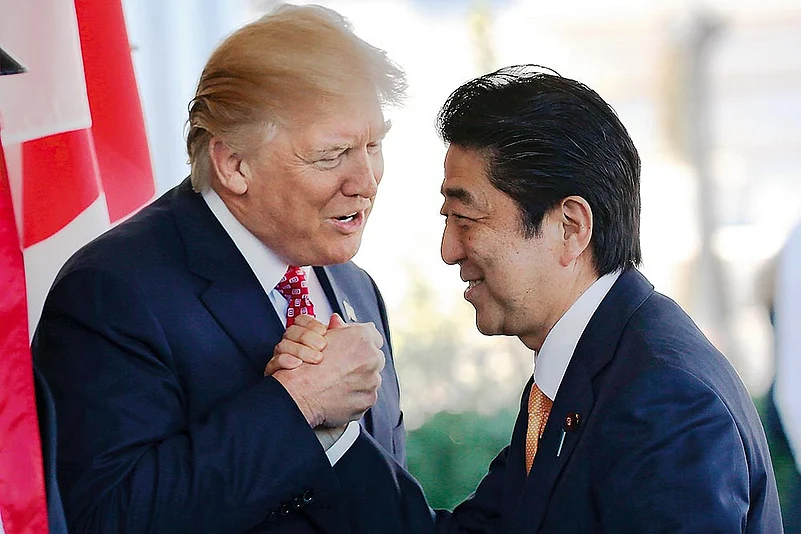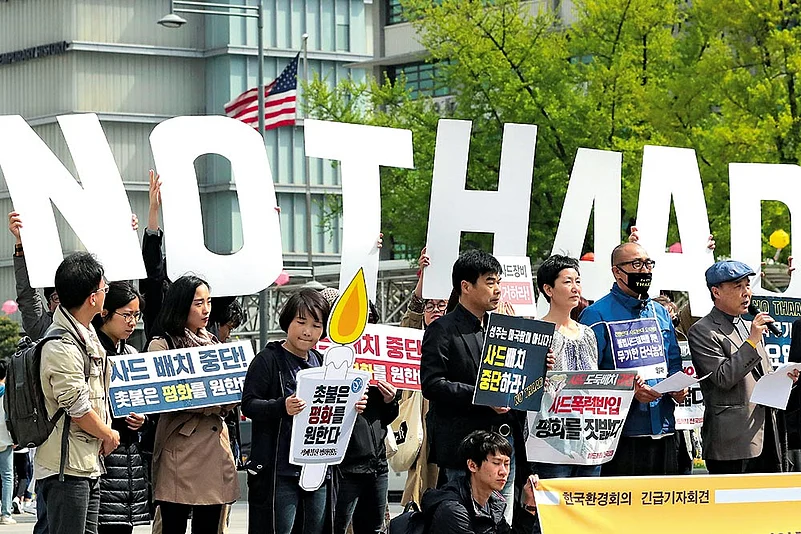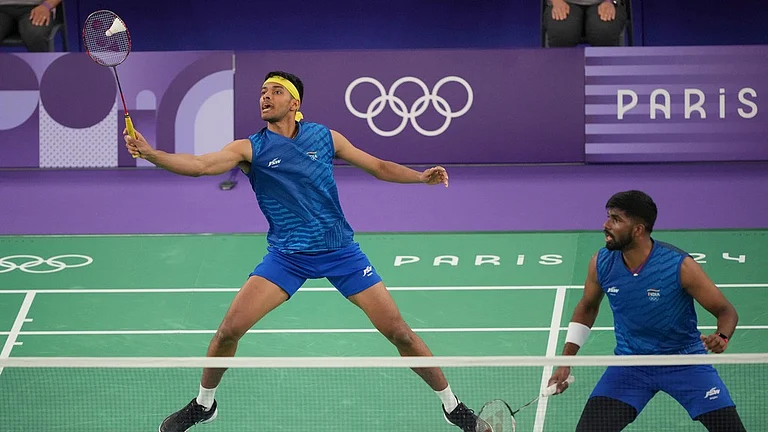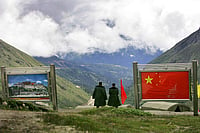With the Mar-a-Lago meeting in Florida, Chinese President Xi Jinping and US President Donald Trump have found a new consensus on collaborative curbing of the nuclear weapons programme of Democratic People’s Republic of Korea (DPRK, or North Korea). This meeting has helped their relationship on currency, trade and investment, as well as on the “One China” principle.
In his first 100 days as the President of the USA, Donald Trump has not received much positive commentary. If there is any single reason to commend him, it is the “chemical reaction” set in motion since his meeting with President Xi. With the relationship with the US heading fast towards greater stability, there is much space left for Beijing to promote ties in Asia. In just over a year, Beijing has already much improved its relations with the Philippines and Vietnam. Now China is getting ready for a ‘Summit on International Cooperation of Belt-and-Road Initiative’ this month in Beijing.
China’s return to a central place in Asian geopolitics has a number of reasons. It is no longer the Middle Kingdom that positioned itself at the centre of a tributary system. Over the decades, China has also reversed its revolutionary approach to international institutions, opting instead for a strategic low key to avoid military conflict and receive developmental resources for its growth. Now, it is time for Beijing to offer international public goods, including the belt-and-road initiative, and the associated Asia Infrastructure Investment Bank.
At this stage, China can be compared neither to the US nor to the erstwhile Soviet Union. China of the 21st century imposes no ideology on others. It has not waged wars, unlike the US (Iraq, 2003) or Soviet Union (Afghanistan, 1979). Instead, China initiates international coalitions of infrastructure buildup in its neighborhood and elsewhere. It aims to get rid of poverty and pandemics at home and abroad, so every nation-state can benefit.
Nevertheless, a more stable relationship with the US doesn’t mean China is free of peripheral concerns—territorial disputes with Japan and India are yet to be resolved. New Delhi and Tokyo could feel chilly due to China’s rise, and are becoming partners to attain check and balance in Asia. Pyongyang’s persistent quest for a nuclear bomb continues to plague China, as does the matter of Seoul allowing the US to set up a terminal high altitude area defence (THAAD) missile system. Worse, India hasn’t embraced China’s belt-and-road initiative because its flagship China-Pakistan Economic Corridor (CPEC) passes through the disputed Pakistan-controlled Kashmir.
It is to handle such challenges—and at least to force the North Korean nuclear programme to a pause—that China needs to collaborate with the US. Last month’s summit meeting seems to have built trust between the heads of state of China and the US. Now that President Trump has opened the possibility to meet with Kim Jong-un, there is a greater chance of using diplomacy to achieve a soft landing. Beijing and Washington need to balance the carrot with the stick to prolong the stability in the Korean peninsula.

Trump with Japanese PM Shinzo Abe
Not that the summit ironed out all the jagged edges of the China-US relationship—the two countries could not agree on the deployment of THAAD, for instance. To demand that the Republic of Korea (ROK) abandon THAAD misses the target as it is the US that asks for deployment. China shall ask America not to deploy THAAD, rather than ask South Korea not to allow the deployment. Apparently, the summit at Palm Beach did not resolve this problem between Beijing and Washington.
The more China asks for the South Korea to reverse its decision, the more South Korea has been pressed to allow the deployment—the result is counterproductive. While Beijing expects the next South Korean president to make a final decision on the deployment, the US claims to have deployed the system already and THAAD is now ready for knocking down incoming missiles.
Fixing Pyongyang’s nuclear and missile development remains a formidable challenge. North Korea is weighing the cost and benefit of conducting its sixth nuclear weapons test imminently and has not carried it out so far. That doesn’t mean it would not test later or abandon its nuclear wherewithal. It is Pyongyang’s will not to give up its nuclear weapons, just like China and the US won’t, no matter what the external pressure. North Korea is ready to break its relations with China to keep its nascent nuclear deterrent intact.
Obviously, the Mar-a-Lago meeting has failed to resolve China-US distrust due to THAAD in South Korea. And North Korea would keep testing the extent of China-US newfound cooperation to contain its nuclear ambition. This offers both opportunity and challenge to the already complex Beijing-Washington ties. If North Korea retreats, China and the US will claim it as a successful outcome of their cooperation. But if Pyongyang does not, the US won’t count on China anymore, but bring more deterrence too close to the Korean peninsula, making China feel more insecure.
The chance that China would be freer to deal with Japan on the East China Sea territorial dispute is slim. Dealing with Tokyo isn’t going to be any easier simply because of the Xi-Trump meeting. China will be smart not to take this “opportunity” to challenge Japan, as doing so could lead to the strengthening of the Tokyo-Washington axis that Beijing doesn’t want.
In a similar vein, improvement in China-US relations doesn’t bode well for ties with India on China’s terms. From India’s point of view, the three major obstacles between New Delhi and Beijing are CPEC in Pakistan-controlled Kashmir, China’s refusal to support India’s bidding for a seat in the Nuclear Suppliers Group, and China’s attitude towards the so-called Pakistan-initiated “terrorism”. None of this is going to be eased just because of the Mar-a-Lago summit, which—everything considered—doesn’t seem to give China fundamentally expanded space to claim its leadership in Asia.
China’s provision of public goods in Asia, such as initiating its proposal of cross-border infrastructural connectedness, enables Beijing’s attractiveness. This has nothing to do with Trump or the Mar-a-Lago summit. China’s unwillingness to resort to force for reclaiming Taiwan, Diaoyu Islands and the disputed Spratly islands/islets gives it tremendous power. China would not be foolish to abandon such power after the success of the summit.
It’s too early to speculate on how long this wave of improving relations between China and the US would last. As long as North Korea keeps refusing to denuclearise itself, China runs the risk of losing Pyongyang while disappointing the US. As long as China keeps demanding the removal of THAAD in South Korea, it won’t help its relationship with the US, while ties with South Korea will remain frosty. And China’s wish to have win-win relations with both Pakistan and India will be bogged down as long as it pushes the envelope on CPEC. Beijing has to be cautious not to push it too fast, despite improvement of relations with America from time to time. China’s aspiration to play a leadership role in Asia is not destined to be smooth.
(The writer is professor and associate dean, Institute of International Studies, Fudan University, Shanghai.)






















